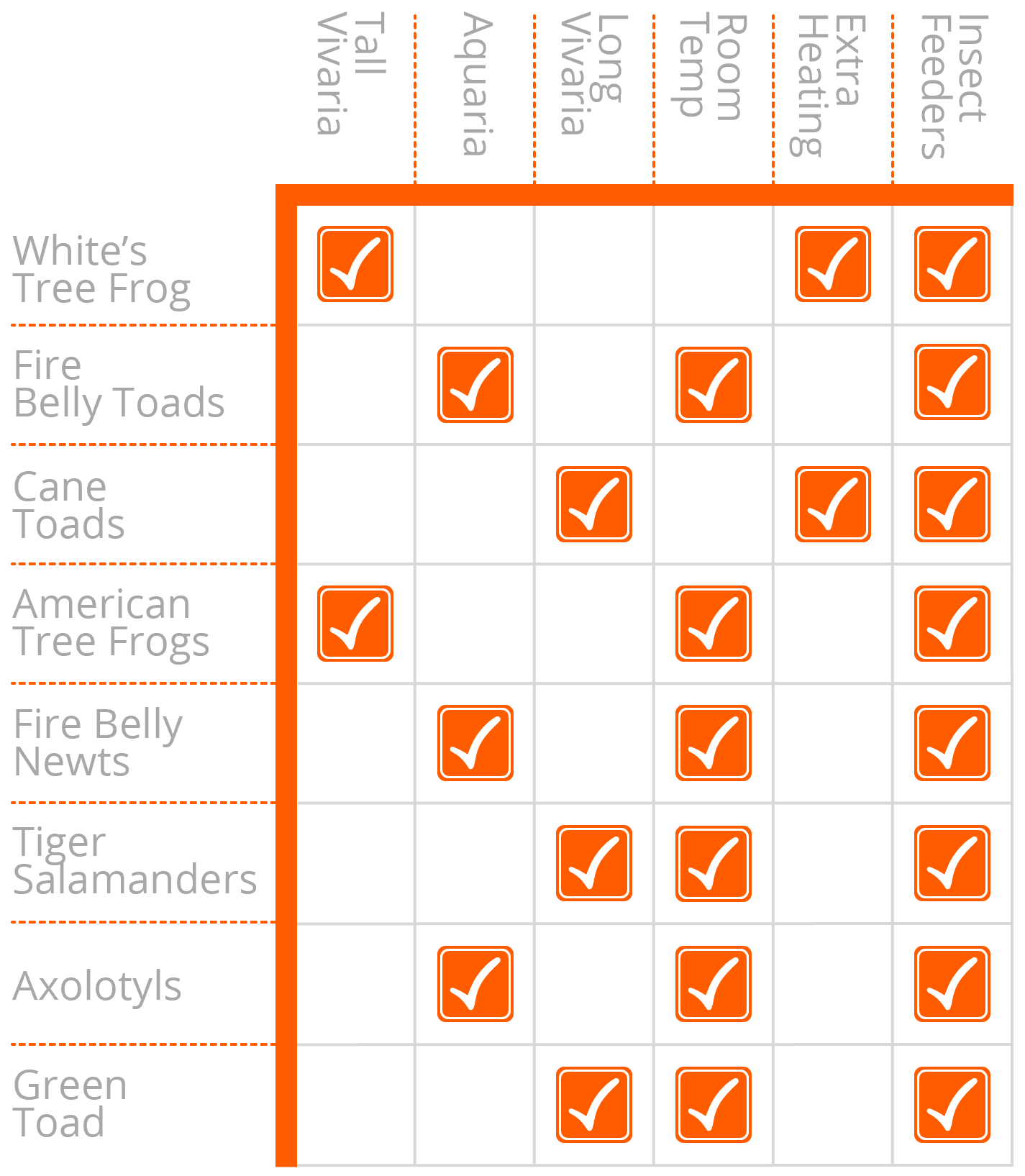The care of amphibia — Frogs, Toads, Newts & Salamanders
What are temperate and tropical species?
These are the regions in the world that amphibia come from—taking this into account we have to cater for their temperature requirements differently.
Temperate species;
Fire Bellied Toads, Green Toads, Firebellied Newts, Axolotyls, Fire Salamanders.
Tropical species;
Red Eye Treefrogs, Whites Treefrogs, Cane toads, Poison Dart Frogs, Horned Toads, African Bullfrogs.
How to provide heat for tropical species
Many keepers utilise heat mats or heat cables, others use heat bulbs. It is very important to control the output with a thermostat.

Signs of Ill Health
- Swollen limbs
- Reddening of the skin (especially on the back legs)
- Sunken looking skin or eyes
- Sores
- Lack of appetite
- Tremors
- Cloudy or dull eyes
- Bloated abdomen
Possible causes of Ill Health
- Dirty conditions
- Incorrect diet / supplementation
- Incorrect temperature / Humidity control
Housing
- Glass or Plastic.
- Treefrogs require tall vivaria.
- Must be escape proof.
- Provide internal decor such as a water bowl, branches, hides & plants.
Heating / Temperatures
- Tropical species require a temperature of around 26C day / night
- Temperate species require a temperature on the cool side, generally an average room temperature is fine—approximately 18-20C.
Lighting
Most keepers only provide full spectrum
lighting—2{cb5d0a8cf0c44aef2db327d9ab0dba08dd09aed1126b509e5fa01d3aaa87fe47} will suffice.
Substrates
- Amphi-foam is great for many treefrogs and also Firebellied toads.
- Gravel (smooth, round) is ideal for aquatic species.
- Sphagnum moss can be used for many frog species and also for Horned frogs.
- Soil based, kept only mildly damp, is fine for many toad species.
Humidity (level of moisture in the air)
- Generally speaking most toads require a dry atmosphere—around 40-50{cb5d0a8cf0c44aef2db327d9ab0dba08dd09aed1126b509e5fa01d3aaa87fe47}.
- Generally speaking most frogs and salamanders require a higher level—around 70-95{cb5d0a8cf0c44aef2db327d9ab0dba08dd09aed1126b509e5fa01d3aaa87fe47}.
- Spray twice daily for those that require a high level of humidity.
Hygiene
- Spot clean daily taking out faecal, uneaten food etc.
- Change water daily—use a dechlorinator additive.
- Do not use detergents, amphibians can be poisoned easily.
Diet and Supplements
- A Commercially available livefood such as crickets, worms, locusts, waxworms & cockroaches.
- Gut load the livefood with a insect loading mixture.
- Use a reptile multi-vitamin and calcium supplement.
- Feed daily for babies and every other day for adults.

Is an Amphibian Suitable for Me?
- I am aware of the long life aspect—maybe 15-20 years.
- Many amphibia have irritant / mildly toxic secretions.
- I am aware of the need for livefood (insects) and that they may escape.
Recommended Supplies
- Glass or plastic terrarium.
- Floor covering suitable for species.
- Heat mat if the species requires it.
- Humidity and temperature gauges.
- Full spectrum lighting if required.
- Appropriate multi-vitamin supplements.
- De-chlorinator additive.
- Livefood
- Hides and climbing decor (including plastic plants)
